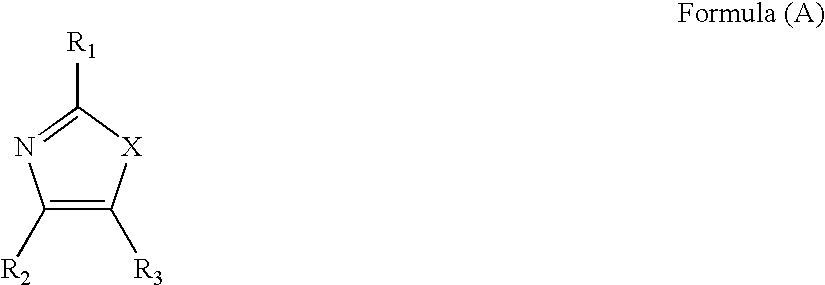Display element and method of driving the same
a technology of display elements and display elements, applied in static indicating devices, anthracene dyes, instruments, etc., can solve the problems of low portability, difficult to consider action as a gentle means for the human body, fatigue of eyes, etc., and achieve the effect of simple member constitution
- Summary
- Abstract
- Description
- Claims
- Application Information
AI Technical Summary
Benefits of technology
Problems solved by technology
Method used
Image
Examples
example 1
Production of Display Element 1
[0318](Preparation of Electrolytic Solution 1)
[0319]There were dissolved 0.1 g of silver iodide, 0.15 g of sodium iodide, 0.05 g of polyethylene glycol (average molecular weight: 500,000), and 0.1 g of 3,3,-dimethyl-2-(p-dimethylaminostyryl)indolino[2,1-b]oxazoline (hereinafter referred to as IRPDM) in 2.5 g of dimethyl sulfoxide to obtain electrolytic solution 1.
[0320](Production of Electrode 1)
[0321]An ITO (indium tin oxide) film of a pitch of 145 μm and an electrode width of 130 μm was formed on a glass substrate of 2 cm×4 cm having a thickness of 1.5 mm via a conventionally known method to obtain electrode 1 which was a transparent one.
[0322](Production of Electrode 2)
[0323]A silver-palladium electrode having an electrode thickness of 0.8 μm, a pitch of 145 μn, and an electrode width of 130 μm was formed on a glass substrate of 2 cm×4 cm having a thickness of 1.5 mm via a conventionally known method. This electrode was designated as electrode 2.
[03...
example 2
Production of Display Element 2
[0330]Electrolytic solution 2 was prepared in the same manner as for electrolytic solution 1 used in production of above display element 1 except that IRPDM was changed to an equimolar amount of exemplified compound 13 of Formula (A). Subsequently, display element 2 was produced in the same manner as in production of display element 1 except that electrolytic solution 1 was changed to electrolytic solution 2.
Evaluation of Display Element 2
[0331]Display element 2 was evaluated in the same manner as for display element 1 as described above. Display element 2 realized white display during no voltage application; cyan display (maximum absorption wavelength: 645 nm) during +1.5 V application; and black display during −1.5 V application. Accordingly, the results showed that multi-color display of 3 colors was realized using one type of electrolyte between a pair of opposite electrodes.
[0332]In display element 2, the overvoltage for cyan coloring was 0.8 V an...
example 3
Production of Display Element 3
[0333]Electrolytic solutions 4 and 5 were prepared in the same manner as for electrolytic solution 2 used in production of display element 2 described in Example 2 except that 0.3 g of titanium oxide was added and further exemplified compound 13 of Formula (A) was changed to an equimolar amount of exemplified compound 105 and exemplified compound 4 of Formula (A), respectively.
[0334]The peripheral portion of electrode 2 described in Example 1 was edged with an olefin-based sealing agent containing glass spherical beads of an average particle diameter of 20 μm at 10% by volume. And then a partition wall having 100 μm square windows was formed on the pixel portions intersecting with electrode 1 via photolithography to produce electrode 4. Electrolytic solutions 3, 4, and 5 were injected into the individual windows separately via Bayer arrangement using a dispenser. Further, electrode 1 was bonded at right angles to each stripe electrode to produce displa...
PUM
| Property | Measurement | Unit |
|---|---|---|
| reflectivity | aaaaa | aaaaa |
| temperature | aaaaa | aaaaa |
| weight measuring method | aaaaa | aaaaa |
Abstract
Description
Claims
Application Information
 Login to View More
Login to View More - R&D
- Intellectual Property
- Life Sciences
- Materials
- Tech Scout
- Unparalleled Data Quality
- Higher Quality Content
- 60% Fewer Hallucinations
Browse by: Latest US Patents, China's latest patents, Technical Efficacy Thesaurus, Application Domain, Technology Topic, Popular Technical Reports.
© 2025 PatSnap. All rights reserved.Legal|Privacy policy|Modern Slavery Act Transparency Statement|Sitemap|About US| Contact US: help@patsnap.com



